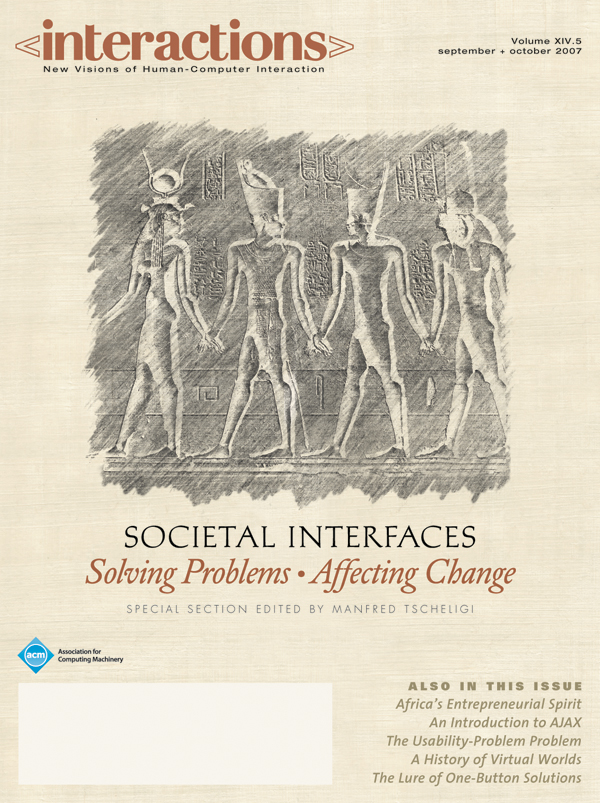Authors:
Manfred Tscheligi, Wolfgang Reitberger
The use of information and communication technologies (ICTs) to solve societal problems goes back to the pioneers of HCI. In his groundbreaking 1962 article "Augmenting Human Intellect: A Conceptual Framework," Douglas Engelbart states that his reason for bootstrapping human intelligence is the growing complexity and urgency of the problems that society faces on an increasingly global level [1]. More than a decade later, Ted Nelson points out the potential of computer screens to make people happier and smarter and help them deal with their problems [7]. For some time after Nelson, the HCI community focused mainly on usability issues…
You must be a member of SIGCHI, a subscriber to ACM's Digital Library, or an interactions subscriber to read the full text of this article.
GET ACCESS
Join ACM SIGCHIIn addition to all of the professional benefits of being a SIGCHI member, members get full access to interactions online content and receive the print version of the magazine bimonthly.
Subscribe to the ACM Digital Library
Get access to all interactions content online and the entire archive of ACM publications dating back to 1954. (Please check with your institution to see if it already has a subscription.)
Subscribe to interactions
Get full access to interactions online content and receive the print version of the magazine bimonthly.







Post Comment
No Comments Found